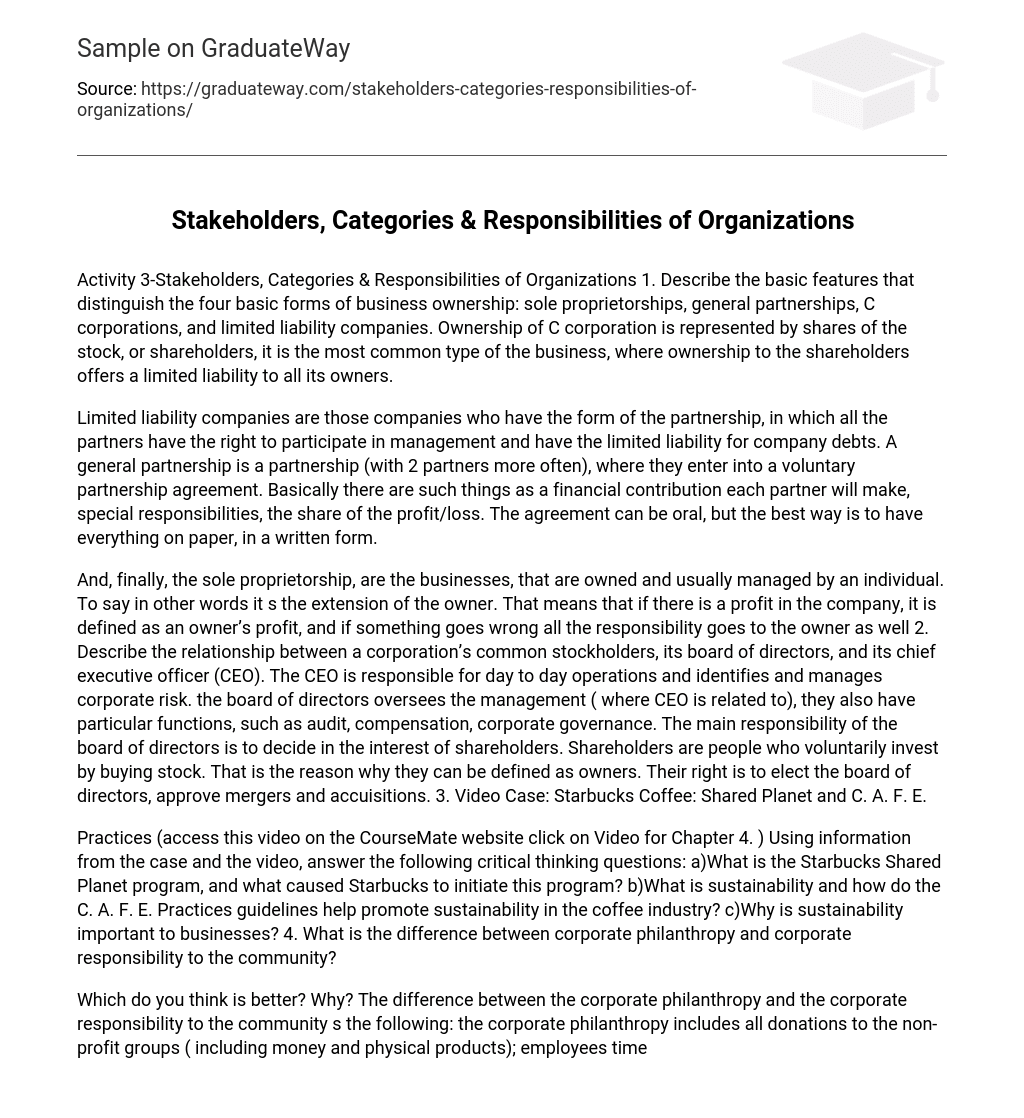Explain the key traits that distinguish sole proprietorships, general partnerships, C corporations, and limited liability companies in terms of business ownership..
Shares of stock or shareholders represent ownership in a C corporation, which is the most prevalent form of business. This type of ownership provides limited liability to shareholders. In limited liability companies, partners are similar to partnerships as they contribute to management and bear limited liability for company debts.
In a general partnership, usually consisting of two partners or more, they voluntarily create a partnership agreement. This agreement includes details such as each partner’s financial contribution, specific responsibilities, and the distribution of profits or losses. While the agreement can be verbal, it is recommended to have it in written form for clarity and documentation purposes.
The sole proprietorship is a type of business ownership in which one person owns and usually manages the company. This means that the business is essentially an extension of the owner, and any profits made by the business are considered the owner’s earnings. Furthermore, if anything goes wrong or the business fails, the owner is fully responsible.
The relationship between a company’s common stockholders, its board of directors, and its chief executive officer (CEO) is explained.
The CEO is responsible for overseeing daily operations and managing corporate risk. The board of directors, which consists of the CEO, assumes various roles such as audit, compensation, and corporate governance. Essentially, the primary function of the board is to make decisions that benefit shareholders – individuals who invest through purchasing stocks. Shareholders can be seen as owners with the power to elect the board of directors and approve mergers and acquisitions.
What are the differences between corporate philanthropy and corporate responsibility to the community, and which one is better?
Corporate philanthropy encompasses all forms of support provided by a company to non-profit organizations, such as monetary donations, physical products, and employee time. This can also include compensating employees for their involvement with non-profits. On the other hand, corporate responsibility goes beyond philanthropy and focuses on the overall actions of the business itself, rather than solely emphasizing financial contributions or dedicating resources like products and time.
From an ethical perspective, both corporate responsibility and corporate philanthropy have societal advantages. Yet, corporate responsibility is considered superior because not all individuals are interested in receiving donations, and non-profit organizations do not make a notable contribution to the economy. Cisco Systems has introduced initiatives aimed at supporting different sectors of society, including the military and disabled individuals. These programs can assist in their personal development and promote a sense of value instead of marginalization.
What is the line that separates personal responsibility from corporate responsibility and how does it differ among various industries? Additionally, what role, if any, should the government play?
The text emphasizes the importance of developing a rationale for each answer by President Kennedy in the early 1960s, who introduced consumerism as a social movement. The movement prioritizes four fundamental human rights: the right to be safe, informed, choose, and be heard. Organizations aim to ensure accountability to consumers based on these principles. In today’s globalized world with increasing competition, providing exceptional service is crucial for customer retention.
In my opinion, both the customer and the organization that provides goods share responsibility for the product. While the organization has accountability for what they communicate, personal responsibility starts with making choices. Although external factors like mass media can influence our opinions, we still possess independent thinking abilities in a world of free trade. It is explicitly stated that alcohol is harmful to liver health and should not be sold to individuals under 18 years old.
When the lady in the shop and parents neglect to inform their baby of the consequences, issues arise. This applies to all products. For instance, if a shampoo bottle has a warning about potential allergies and a customer fails to read it, they are responsible for any resulting problems. In my opinion, the government should only focus on products such as medicine, alcohol, cigarettes, and fast food. In these cases, someone should clearly state that SMOKING KILLS and that McDonald’s is neither healthy nor fresh.
In essence, companies are restricted in their actions as they cannot prohibit anything that is legal. Green marketing involves creating and promoting environmentally friendly products and practices to gain a competitive edge. While many companies have adopted this concept, there are difficulties involved. Most individuals do not wholly endorse green marketing since they are unwilling to compromise on price, performance, or materials when making such purchases.
The organic movement is a recent development, and all organic products are considerably pricier than conventional ones. In times of crisis, individuals tend to prioritize cost savings over buying products that don’t differ much from their rivals despite being more expensive.





